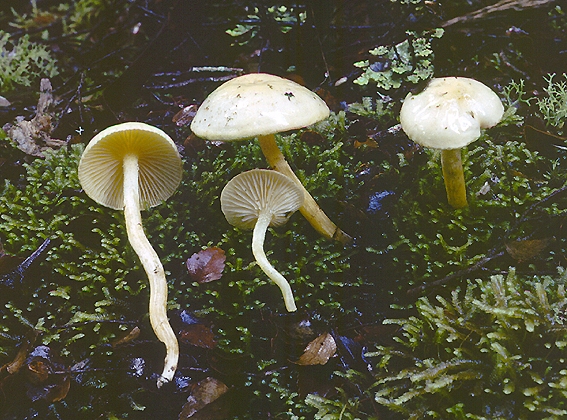
Hygrophorus involutus G.Stev.
Common name: None.
Description: The caps are hemispherical to convex, smooth and are 13 (5) cm in diameter. The surface is viscid to glutinous when the caps are fresh, but the viscidity is lost in dry weather and the caps then appear matt. The cap margins are very strongly inrolled, especially when the fungus is young. The gills are adnate to arcuate, crowded and clear apricot-pink or yellow. The stem may reach up to 10 cm in length but is commonly 58 cm and 23.5 mm thick; it usually has a colour similar to that of the cap and is slightly viscid when fresh. A very distinctive character is the presence of small, clear droplets of moisture that cluster on the surface at the top of the stem near the gills.
The spores measure 69 × 3.55 µm, are ellipsoidal, smooth and colourless but white in mass.
Substratum: Hygrophorus involutus is to be found on soil or among moss or litter in eucalypt, Nothofagus (beech) and subtropical rainforests. It is generally found in small groups or troops of perhaps 10 individuals.
Distribution: Known from New South Wales, Victoria and Tasmania.
Notes: This species is the only member of the genus known to occur in Australia. It is reasonably common in its range and it may be mycorrhizal with the adjacent trees. Hygrophorus involutus occasionally produces pure white fruiting bodies among groups of normally pigmented individuals.

